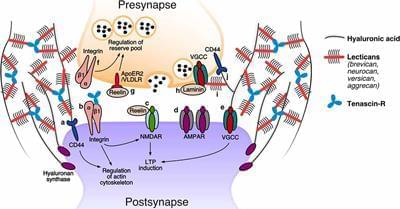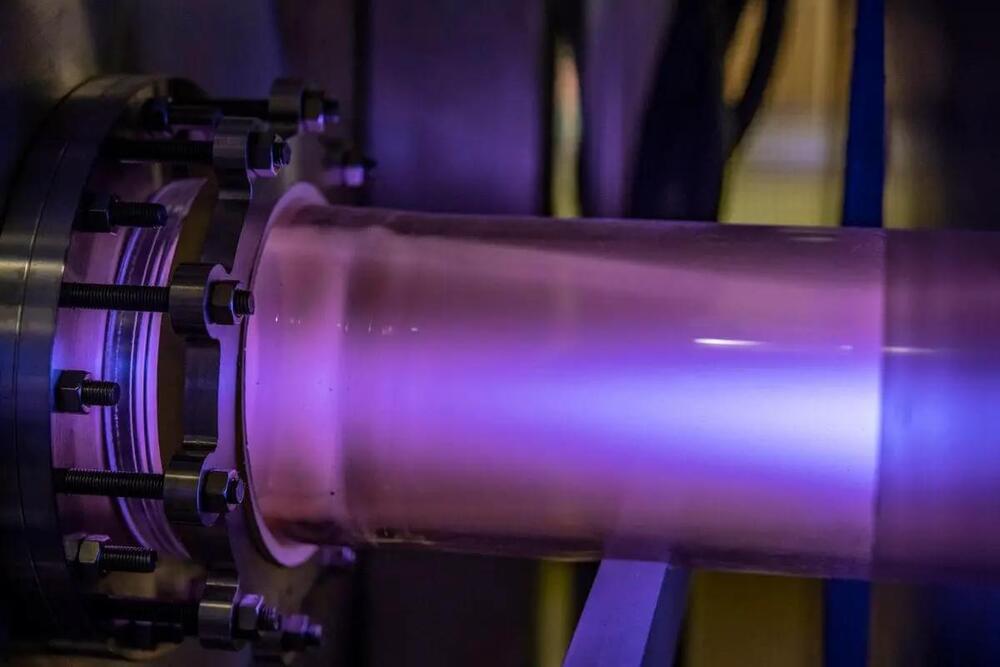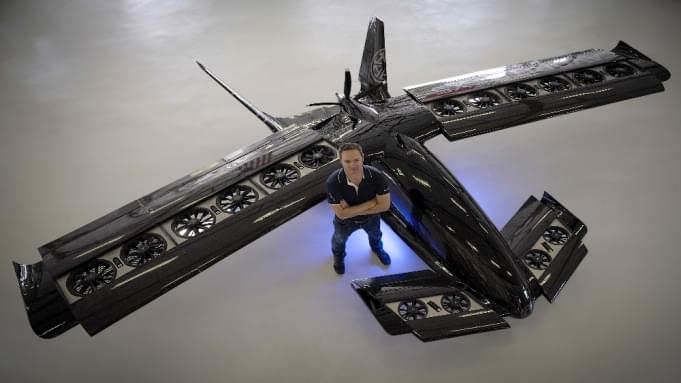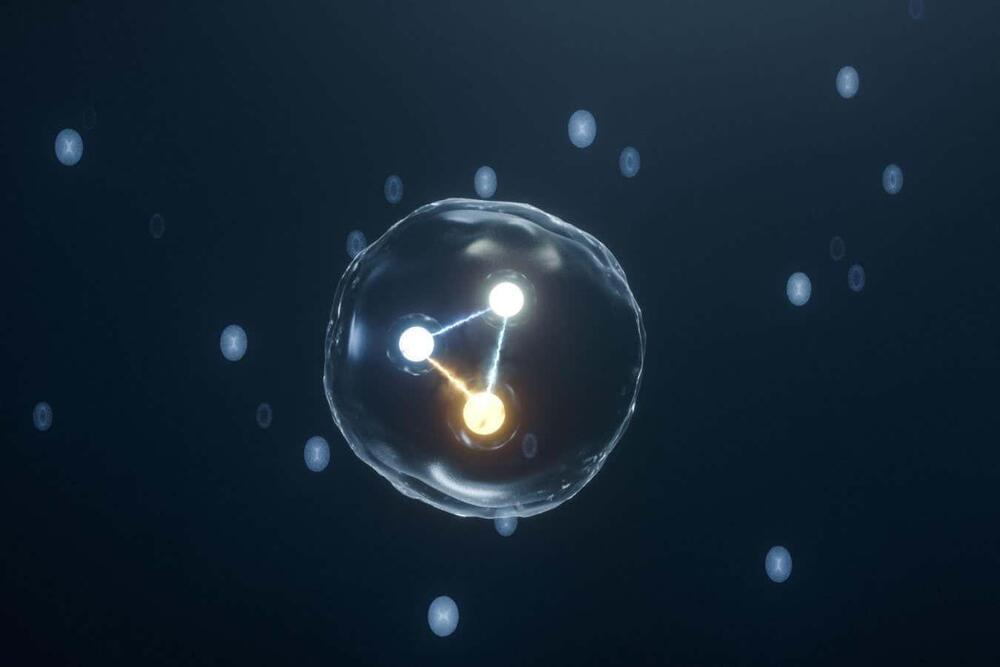There’s a huge difference between sending humans to Mars and colonizing worlds outside our solar system.



In the adult brain, synapses are tightly enwrapped by lattices of the extracellular matrix that consist of extremely long-lived molecules. These lattices are deemed to stabilize synapses, restrict the reorganization of their transmission machinery, and prevent them from undergoing structural or morphological changes. At the same time, they are expected to retain some degree of flexibility to permit occasional events of synaptic plasticity. The recent understanding that structural changes to synapses are significantly more frequent than previously assumed (occurring even on a timescale of minutes) has called for a mechanism that allows continual and energy-efficient remodeling of the extracellular matrix (ECM) at synapses. Here, we review recent evidence for such a process based on the constitutive recycling of synaptic ECM molecules. We discuss the key characteristics of this mechanism, focusing on its roles in mediating synaptic transmission and plasticity, and speculate on additional potential functions in neuronal signaling.
An increasing number of studies are showing that synaptic function is strongly influenced by their local environment, including the molecules or cellular components in their vicinity. As a result, the classical synaptic framework (consisting of the pre-and postsynaptic compartments only) has gradually been extended to include the neighboring astrocytic processes (the “tripartite synapse”; Araque et al., 1999) and, ultimately, also the surrounding extracellular matrix (ECM; the “tetrapartite synapse”; Dityatev et al., 2006). Nowadays, the synaptic ECM is recognized to play an essential role in physiological synaptic transmission as well as in plasticity, and its dysregulation has been linked to synaptopathies in a wide variety of brain disorders (Bonneh-Barkay and Wiley, 2009; Pantazopoulos and Berretta, 2016; Ferrer-Ferrer and Dityatev, 2018).

Physicists at West Virginia University have overcome a long-standing limitation of the first law of thermodynamics.
Paul Cassak, a professor and associate director of the Center for KINETIC Plasma Physics at West Virginia University, and Hasan Barbhuiya, a graduate research assistant in the Department of Physics and Astronomy, are investigating the conversion of energy in superheated plasmas in space. Funded by the National Science Foundation, their findings, published in the Physical Review Letters journal, are set to revolutionize the understanding of how plasmas in space and labs are heated and could have far-reaching implications in physics and other sciences.



Woah, we’re halfway there. The company behind the hotly anticipated eVTOL Cavorite X5 announced it has completed construction of a 50-percent-scale prototype of its stylish flying vehicle concept.
Horizon Aircraft impressed us last year when it unveiled the Cavorite X5, with the Toronto-based company showing that the usually utilitarian world of eVTOLs could afford a little more attractive form with its function. The sleek, canard-style plane can takeoff, soar and land like a conventional aircraft, but the wings can open to reveal 16 ducted fans that provide the aircraft’s vertical lift. Once at altitude, the wing closes as it transitions to cruising. This technology would allow the aircraft to fly 98 percent of its voyage in a low-drag configuration, much like a traditional aircraft. When Horizon builds its full-scale version of the eVTOL, it will be powered by a hybrid electric system that can recharge a battery in-flight.


An experiment that probed particles called gluons, which contain most of the mass of a proton, has revealed that a proton’s radius alters depending on whether you look at the particle’s charge or mass.
By Alex Wilkins
Lex Fridman Podcast full episode: https://www.youtube.com/watch?v=AaTRHFaaPG8
Please support this podcast by checking out our sponsors:
- Linode: https://linode.com/lex to get $100 free credit.
- House of Macadamias: https://houseofmacadamias.com/lex and use code LEX to get 20% off your first order.
- InsideTracker: https://insidetracker.com/lex to get 20% off.
GUEST BIO:
Eliezer Yudkowsky is a researcher, writer, and philosopher on the topic of superintelligent AI.
PODCAST INFO:
Podcast website: https://lexfridman.com/podcast.
Apple Podcasts: https://apple.co/2lwqZIr.
Spotify: https://spoti.fi/2nEwCF8
RSS: https://lexfridman.com/feed/podcast/
Full episodes playlist: https://www.youtube.com/playlist?list=PLrAXtmErZgOdP_8GztsuKi9nrraNbKKp4
Clips playlist: https://www.youtube.com/playlist?list=PLrAXtmErZgOeciFP3CBCIEElOJeitOr41
SOCIAL:
- Twitter: https://twitter.com/lexfridman.
- LinkedIn: https://www.linkedin.com/in/lexfridman.
- Facebook: https://www.facebook.com/lexfridman.
- Instagram: https://www.instagram.com/lexfridman.
- Medium: https://medium.com/@lexfridman.
- Reddit: https://reddit.com/r/lexfridman.
- Support on Patreon: https://www.patreon.com/lexfridman

♡,♡!!!
In a sense, the extinct woolly mammoth has returned —as a meatball. On Tuesday, an Australian cultured meat start-up revealed a sphere of lab-grown meat, produced with a DNA sequence from the elephant-like mammal.
But you won’t find this product in grocery stores; the creation is not meant to be eaten, at least for now. Instead, the “mammoth meatball” aims to highlight the environmental impacts of standard agricultural practices and present cultured meat as a viable option for food production down the line.
“We wanted to get people excited about the future of food being different to potentially what we had before,” Tim Noakesmith, a co-founder of Vow, the company behind the meatball, tells Mike Corder of the Associated Press (AP). “We thought the mammoth would be a conversation starter. … What we wanted to do was see if we could create something that was a symbol of a more exciting future that’s not only better for us, but also better for the planet.”